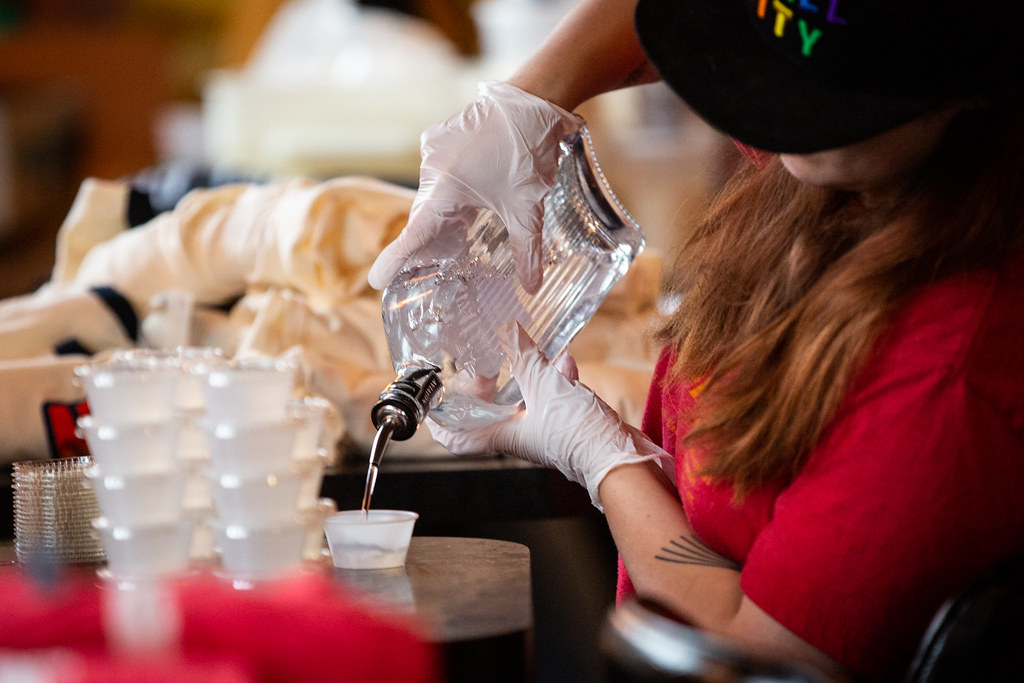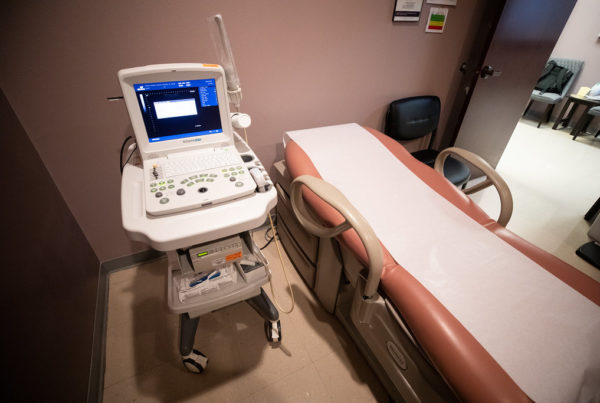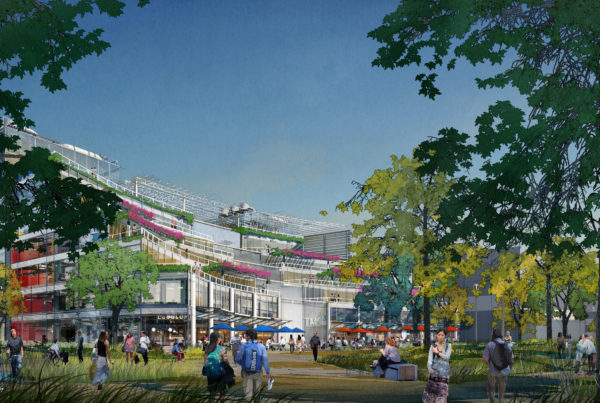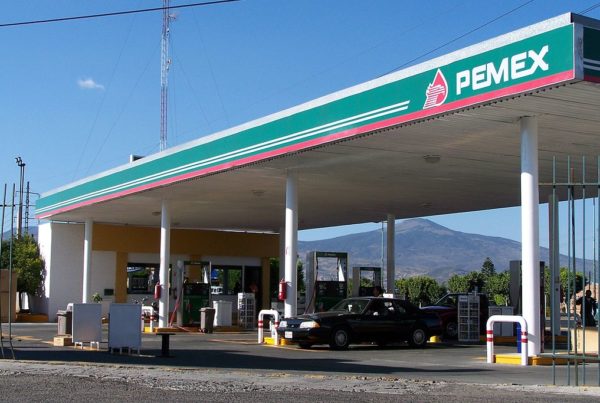Rising COVID-19 cases in Texas have many local leaders calling to renew precautions to mitigate transmission of the coronavirus.
Full-scale shutdowns that were common at the beginning of the pandemic are unlikely now, but some businesses are already voluntarily scaling back capacity. And that’s putting additional strain on businesses that have struggled to stay afloat during the pandemic’s ups and downs, including restaurants.
Emily Williams Knight, CEO of the Texas Restaurant Association, tells Texas Standard that programs like the U.S. Small Business Administration’s Restaurant Revitalization Fund has been key to helping restaurants stay in business. But that program is ending, and she says more support is needed, especially since restaurants now face labor shortages, rising wages, the high cost of goods and more. Listen to the interview with Williams Knight in the audio player above or read the transcript below to learn more about the solutions she proposes.
This interview has been edited lightly for clarity.
Texas Standard: We originally spoke with you back in fall 2020, when the pandemic and lockdowns were still pretty new to everyone. How have restaurants fared since then?
Emily Williams Knight: I think it’s been an up-and-down battle. You know, we get a glimpse of hope that we’ve turned a corner, and the last was around about three or four months before delta, the delta variant, hit. We had operators impacted tremendously, came out of the woods and then, of course, at the most critical time for our industry, which is over the holidays, we had omicron. And that’s actually caused more problems than just consumer demand. Consumers, actually, across Texas want to be in restaurants. We just don’t have the staffing to actually meet that demand.
That’s what we’re hearing from a variety of industries: it’s not so much that they can’t provide, it’s that they don’t have the staff to pull it off. That’s the the big issue for restaurants, too, right?
We’ve got about 80% of restaurants across Texas reporting that they do not have enough staff to even maintain their current published hours.
We’re obviously we’re facing yet another wave of infections as we’ve been talking about. What are you hearing from restaurant owners about how they’re trying to get by?
January is typically a really difficult month for restaurants, or a much slower month is probably a better way to say it. So really, January and February, post-holiday, they usually see a downturn. We’ve seen this last week, anecdotally, from restaurants reporting a pretty significant downturn, and it’s both with consumers being more homebound, but also with employees not being able to come to work because they themselves are ill with coronavirus.
So I think restaurants, what they’ve learned to do in this crisis is becoming extraordinarily entrepreneurial. And so they’re using things like alcohol to go and some of the legislation that we were able to turn into law and get their to-go beverages to kind of increase that ticket price, giving their takeout and curbside and maybe accelerating some of that investment in technology in order to have the guests have that seamless, contactless experience.
But I have to tell you, they’re tired. Know this is 21 months now. This industry has been hit harder than any industry. It’s definitely a lot of emotion across the sector right now, as people that have made it this far are just worried about hanging on [during] this latest variant.
What about resources? I know earlier in the pandemic businesses could apply to the Restaurant Revitalization Fund, right?
We we were huge supporters of that program, and we asked for about $70 billion because we looked at the demand across the country of especially our smaller, independent restaurants. We received just under $28 [billion]. And so within under three weeks, that money was gone. And actually the net result here in Texas is we have 12,000 businesses that ended up with nothing.
Editor’s note: The U.S. Small Business Association reported it awarded $28.6 billion to businesses nationwide through the Restaurant Revitalization Fund.
I have actually been on that phone with probably two or three different congressional leaders from Texas imploring them to replenish that. We do see there is a potential, but without that funding coming in in the next month or two, you’re going to see hundreds, if not thousands, of Texas restaurants close.
Hundreds, if not thousands, of Texas restaurants closed?
Absolutely, with about 9,000 already that we can tie to the pandemic that closed over the last 21 months. That’s slightly separate from just the normal turn of the restaurant industry. And I think what’s scary right now is if you add in the extraordinary increase in supplies as well as labor, that margin that a restaurant really runs on right is incredibly thin. There’s just nowhere for them to go.
Right off, everything you use to make something for a consumer is double in price, and what you’re paying someone’s up 13% over last year, which is the highest among any economywide wages in the sector. And you have less people because you can’t serve them. The math just doesn’t work.
Hit me with that number one more time: You say you like to see the revitalization fund replenished. How much?
Again, we want to cover the 12,000 restaurants that were left in the dark. That’s clearly my laser focus is getting that money into the hands of these small businesses in Texas. But across the nation, the number is so much higher. And so I believe we’re calling for, today, $60 billion. I have to say, they’ve spent five-plus trillion; are we really going to hold back the funds that the restaurant industry deserves and earned, frankly, of no fault of their own? Are we going to quibble about $60 billion in the sea of spend that we already have have gone through? I think it’d be incredibly unfortunate and we know the net result is that these restaurants won’t make it.
Let’s say you get that money and the Restaurant Revitalization Fund is topped off again. That won’t necessarily bring workers back. How are you going to fix that?
I wish I had a simple solution. And I think what we’ve all come to the realization of is a couple of things. I think one, we have to be mindful that when restaurants were shut down across the country overnight, we had millions of employees that were on the sidelines, and that relationship with the restaurant and the owner changed. And for many of our employees, they didn’t have an option just to go on unemployment; they had to go find work.
And so I think a lot of those folks did exactly what you and I would have done. They made a rational choice. And so recruiting them back, while a priority because they’re trained, has to be coupled with both looking at new sources of labor. And those could be all of the folks coming out of retirement that retired when the pandemic hit and they’ve been isolated. And now we’re starting to see some of those folks in that age group come back into the workforce. Can we create rules for them and then how do we bridge the gap with technology?
We saw probably three to four years of tech gains throughout this pandemic for restaurants. And so what are those repetitive tasks that you can automate? How do you use robotics? How do you use new streams that will reduce that, that gap? I mean, people have to remember, we had a pretty significant gap of employees that we needed before the pandemic even hit. This just exacerbated it.
And I think wages increasing, and holistically, a conversation you’re starting to hear more and more about is, you’ve got to show these folks the path from maybe being a barista up to owning that unit, right? There’s got to be that career path. And so we’re doing a lot of work with the [Texas] Workforce Commission and our different education partners to kind of create that path and inspire people that this is a dynamic, fun industry and we just went through the greatest challenge ever, but we’re certainly going to come out of it.














